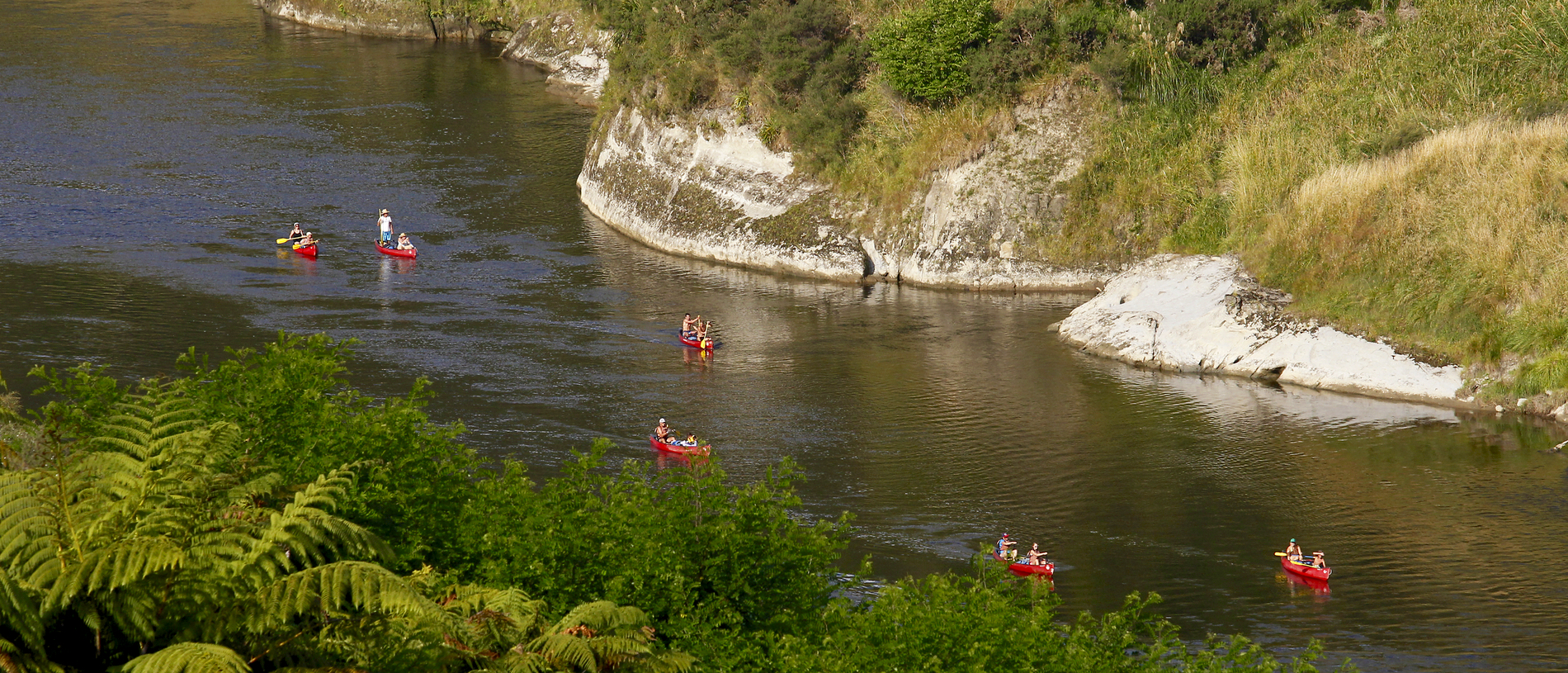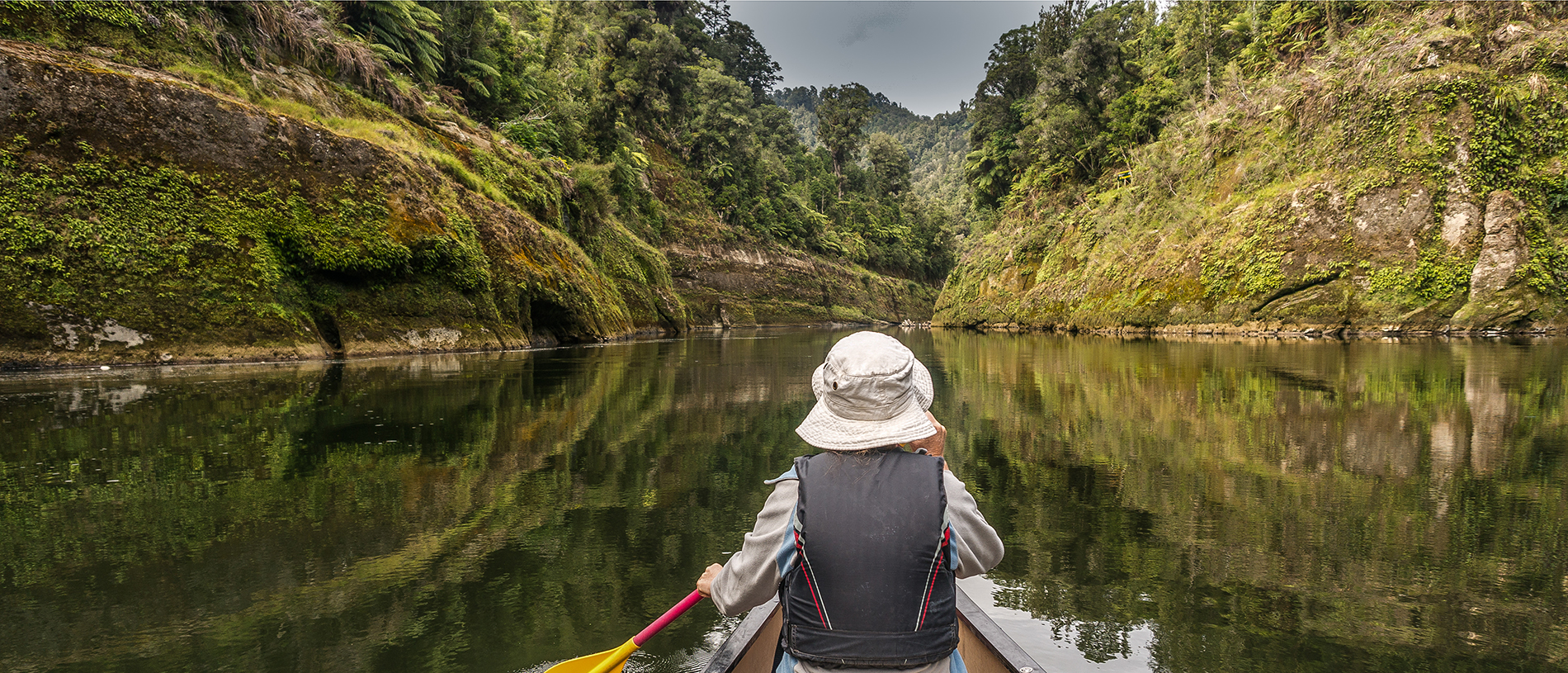
Whanganui Journey: paddle your own canoe
While considered one of New Zealand's Great Walks, the Whanganui Journey is less of a walk and more of a paddle.

The legend of how the Whanganui River came to be is truly befitting of such a magical place.
When Mount Taranaki fought with the mighty Tongariro over the pretty Pihanga, Taranaki was asked to leave, on the advice of Ruapehu. Beset with grief, he headed towards the sun, filling the Whanganui River with tears. How’s that for a romantic story to ponder on as you glide down the river on your kayak?
The Whanganui is New Zealand’s longest navigable river, canoeable for over 200 kilometres. The river winds its way from the mountains to the Tasman Sea through countless hills and valleys, and you can imagine it would have looked much the same a hundred years ago.
Western tributaries of the Whanganui have eroded through mudstone (papa), creating spectacular gorges, bluffs and a maze of intricate ridges and V-shaped valleys. Streams and rivers scattered throughout the park are an important habitat for the whio (blue duck). The park is also home to the largest population of North Island brown kiwi in New Zealand, with several thousand birds present.
The Whanganui River is a very spiritually significant place for Māori, with many wāhi tapu (sacred places). Tieke is one of many old pā on the Whanganui River, where visitors can stay overnight for a cultural immersion experience.
Early Maori used the Whanganui River and its tributaries to facilitate trade and communication among themselves and as far as Wellington, Waikato, Taranaki, Taupō, and Bay of Plenty regions from at least 600 years ago.
Māori believe that every bend and rapid of the river has a guardian, or kaitiaki, who maintains the mauri (life force) of that stretch of the river.
The arrival of European missionaries in the region in the 1840s saw the conversion of many Māori people to Christianity and the establishment of chapels at villages along the river, including at Mother Mary Joseph Aubert’s mission at Jerusalem (Hiruhārama).
A regular riverboat service was established by 1891, carrying passengers, mail and freight to Māori and to European settlers between Whanganui and Taumarunui. As a consequence, tourism flourished in the region until the 1920s.
The Whanganui Journey is classified as one of New Zealand's ‘Great Walks’, despite it not requiring much walking. The 145-km river trip runs from Taumarunui to the village of Pipiriki, taking about five days to complete by canoe or kayak. A three-day journey from Whakahoro to Pipiriki is also possible. The river is very suitable for beginner paddlers – although there are more than 200 rapids between Tamaranui and Pipiriki, most of them drop less than a metre.
Jet boats are another popular way to see the sights of the river without the work. You can jet boat from both ends of the Whanganui River into the park, and the best way to access the Bridge to Nowhere, a spectacular steel-reinforced concrete bridge opened in 1936 to provide access for settlers in the Mangapūrua Valley. Unfortunately, by the time the bridge was completed, most of the settlers had given up and walked off the land.
On foot, the four-day Matemateaonga Track follows an old Māori track and is one of the most popular walks in the park. The Mangapūrua Track takes three to four days, starting at Whakahoro and ending at the Bridge to Nowhere.
Both brown and rainbow trout can be caught in the river, and hunting of pigs, goats and fallow deer is encouraged.
An overnight stay at Tieke Marae is a highlight of most people’s river journeys – run by local iwi, it’s a lovely way to be immersed in the local culture and learn about the history of the area.